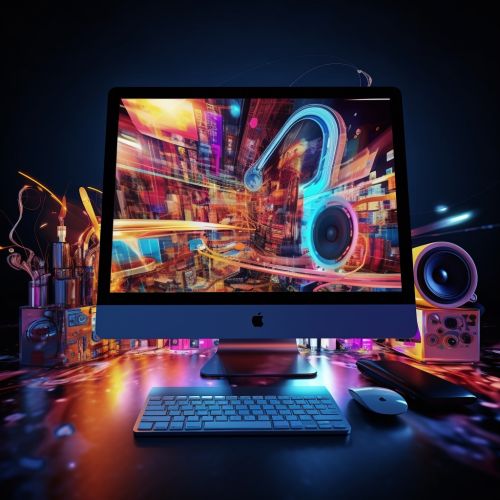Digital media
Introduction
Digital media refers to any media that are encoded in machine-readable formats. Digital media can be created, viewed, distributed, modified and preserved on digital electronics devices. This includes text, audio, video, and graphics that is transmitted over internet or computer networks.
History
The shift to digital media is often credited to the development of the personal computer in the late 20th century, but the concept of digital media actually dates back to the advent of the telegraph. The telegraph was the first technology to transmit messages in digital format — Morse code. The advent of the internet in the late 20th century marked the true beginning of the digital media age. Today, digital media is so pervasive that it has become a part of everyday life, influencing how we consume information, communicate with others, and interact with the world around us.
Types of Digital Media
There are several types of digital media, each with its own unique characteristics and uses. These include:
Digital Text
Digital text is a type of digital media where the information is encoded and stored as a string of binary digits. Digital text can be created, edited, stored and shared electronically, making it a versatile form of digital media.
Digital Audio
Digital audio is sound that has been recorded in, or converted into, digital form. In digital audio, the sound wave of the audio signal is encoded as numerical samples in continuous sequence.
Digital Video
Digital video is a type of digital recording system that works by using a digital rather than an analog video signal. The terms camera, video camera, and camcorder are used interchangeably to describe a device used to record digital video.
Digital Images
Digital images are a type of digital media that are composed of pixel or vector data, which can be stored in image file formats. Digital images can be created by a variety of input devices and techniques, such as digital cameras or scanners.
Impact of Digital Media
Digital media has had a significant impact on society and culture. It has changed the way we communicate, learn, entertain, and work. Here are some key areas where digital media has had a profound impact:
Communication
Digital media has revolutionized the way we communicate. It has made communication faster, more convenient, and more efficient. We can now communicate with anyone, anywhere, anytime, thanks to digital media.
Education
Digital media has transformed the way we learn. It has made education more accessible, interactive, and personalized. With digital media, learning is no longer confined to the four walls of a classroom.
Entertainment
Digital media has changed the way we entertain ourselves. It has given us access to a wide range of entertainment options, from movies and music to games and social media.
Work
Digital media has reshaped the way we work. It has made work more flexible, collaborative, and efficient. With digital media, we can work from anywhere, at any time.
Future of Digital Media
The future of digital media is likely to be shaped by advances in technology, changes in consumer behavior, and shifts in business models. Here are some trends that are likely to shape the future of digital media:
Virtual Reality and Augmented Reality
Virtual Reality (VR) and Augmented Reality (AR) are expected to transform the way we consume digital media. They offer immersive experiences that could revolutionize entertainment, education, and communication.
Artificial Intelligence
Artificial Intelligence (AI) is likely to play a key role in the future of digital media. AI can analyze data, learn from it, and make decisions, which can be used to create personalized and interactive digital media experiences.
5G Technology
5G technology is set to revolutionize digital media by providing faster and more reliable internet connections. This could enable new digital media experiences, such as real-time streaming of high-definition video.
See Also


